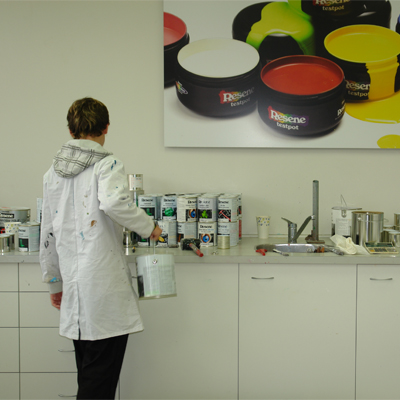Now we all know that hydrostatic pressure is one of the main culprits behind paint failing by being literally ‘blown off’ substrates. Yeah! Well maybe — or even ‘nah’.
So, what is hydrostatic pressure? It is simply the pressure exerted by a column of water and is the product of gravity multiplied by the height (or depth) of the column. The product is also multiplied by specific gravity to account for the fact that the same column of sea water exerts more pressure than fresh water.
So, putting some numbers into this, we find that a 10-metre column of water exerts, at the bottom of the column, a hydrostatic pressure of 98.1 kilo pascals or 0.981 bar or 0.968 atmospheres. In ‘old money’ 14.2psi. This is the pressure experienced at the bottom of the inside of a full, 10m tall concrete water tank. The pressure exerted on the outside of the water tank is significantly attenuated by the thickness and porosity of the concrete the tank is made of.
My old mentor Ted Nightingale — founder of Stipplecote Products (as it was known) and inventor of the first ‘Resene paint’ — used to tell me that “3 inches of good concrete is waterproof!” (He was a concrete man not a metric man!)
Indeed, for even reasonable concrete, the pressure generated on the outside of the tank will be predominantly generated by capillary forces.
So, what does cause some paints to disbond in these circumstances? It generally comes down to the ‘wet adhesion’ of the paint layer to the damp, concrete substrate. Paints, in fact all adhesives, achieve a bond to the substrate using one or more of the several interactive forces which exist at the molecular level. As long as the paint and the substrate maintain this intimate contact, the adhesion will remain relatively uncompromised. Water also has some degree of attraction to both substrate and the underlying surface of the paint — the trick, therefore is to ensure that the bonds exerted by the paint are attractive enough to repel the insinuations of the water. If the water competes better, paint disbondment will occur — if it doesn’t, then the paint will be there for the long haul.
We have all had spots of paint on pathways which it will take a cold chisel to remove and those on our work jeans which have survived everything that a hundred washing cycles can throw at them showing that the paint bonds can be persistent.
There is, however, something else which is likely to be going on. If one takes a simple open U-Tube and simultaneously introduces into each side equal quantities of sea and fresh water, apart from some immediate intermingling at the bottom, the arms should contain predominantly sea water in one and fresh in the other. Nature hates this sort of situation, considering it unstable, and according to the second law of thermodynamics and utilising diffusion processes, over time uniform concentrations of salt will eventually be found in all parts of the U-Tube.
If we repeat the experiment, but with the two arms of the U-Tube separated by a semi-permeable membrane, a very different result occurs. Just to remind you, a semi-permeable membrane is one which allows the small molecules of the solvent to pass through but prevents the dissolved salt (the solute) from doing so.
The fresh water is in contact with the sea water at the sea water side of the membrane and dutifully sets forth to try to achieve equal dilution — followed by more and more of the little diluters in a process called osmosis. The effect is that the column of water in the fresh water arm falls while the sea water side increases, creating a pressure differential.
When that pressure differential reaches a level that matches the drive of the fresh water, further movement stops. This is said to be the ‘osmotic pressure’ of the sea water solution. In this case the osmotic pressure is 27 bar or 26.6 atmospheres — nearly 30 times the pressure exerted by our 10 metres of hydrostatic pressure.
If, at the very beginning of this second experiment, 27 bars of pressure had been applied to the sea water arm, osmosis would have been prevented. Interestingly, if the pressure on the sea water side were increased to 82 bar, this would have been strong enough to drive the water molecules out of the sea water through the semi-permeable membrane, leaving the salt behind. This is the process known as ‘reverse osmosis’ and is useful (among other things) for de-salinating sea water.
For aqueous systems, all soluble compounds are capable of entering into an osmotic system, with the resultant pressure generated varying principally with the amount of material in solution and the degree of ionisation — if any. As an example, a salt solution at a concentration of 250g/litre creates an osmotic pressure of a whopping 250 bar.
Both concrete and paint films can act as semi-permeable membranes. Soluble material can accumulate at (or beneath) the surface during the normal curing of finishing techniques of concrete; surfaces can become contaminated via windblown salts and some soluble moieties within the paint can also accumulate at the interface, all leading to the potential for osmotic pressure development.
Moisture movement through concrete can be mitigated with coatings. The sort of situation envisaged is one where there is a ‘weeping’ of the walls subsequent to rain rather than a water leak via macroscopic cracks. Coatings engineered to deliver high ‘wet adhesion’ properties, such as Resene HydraBlock, are essential for use in this area otherwise they can be literally ‘blown off’ the surface and even such highly engineered coatings need a little help.
Although one could be forgiven for thinking that a weeping wall would be self-cleaning, nonetheless excellent preparation is needed to ensure the surface is free from loose and soluble material (and the area is coated during a dry spell!) Many years ago I wrote an article on surface preparation entitled “Cleanliness is next to Godliness”. ‘Plus ça change, plus c’est la même chose!’




























 Most Popular
Most Popular Popular Products
Popular Products


